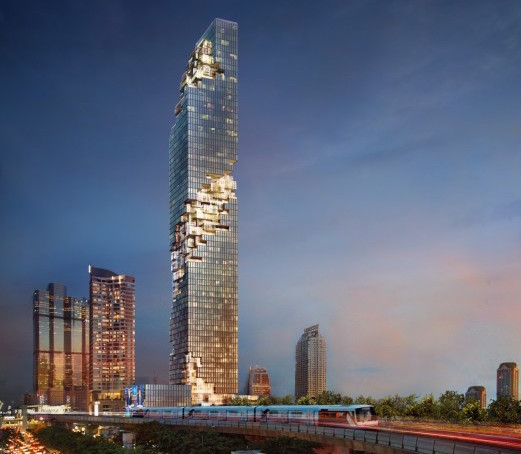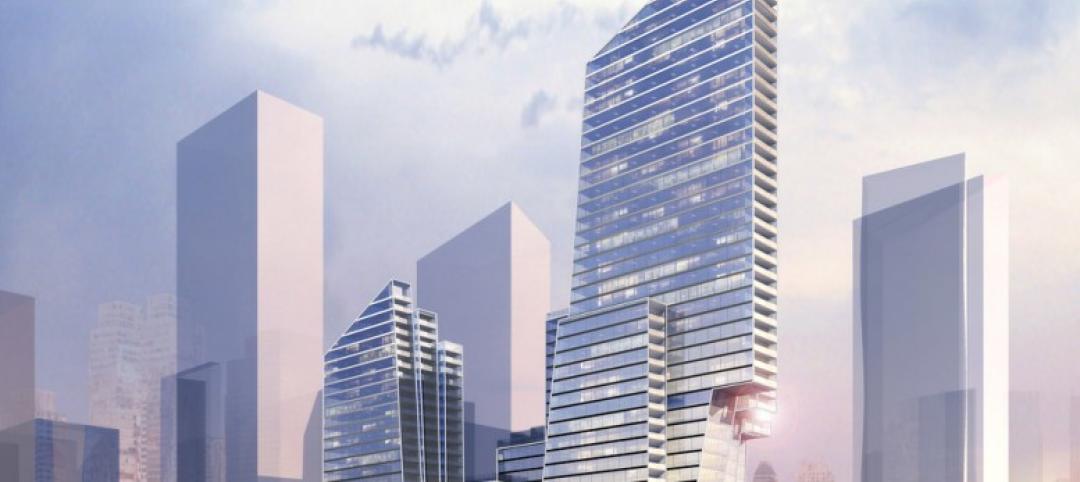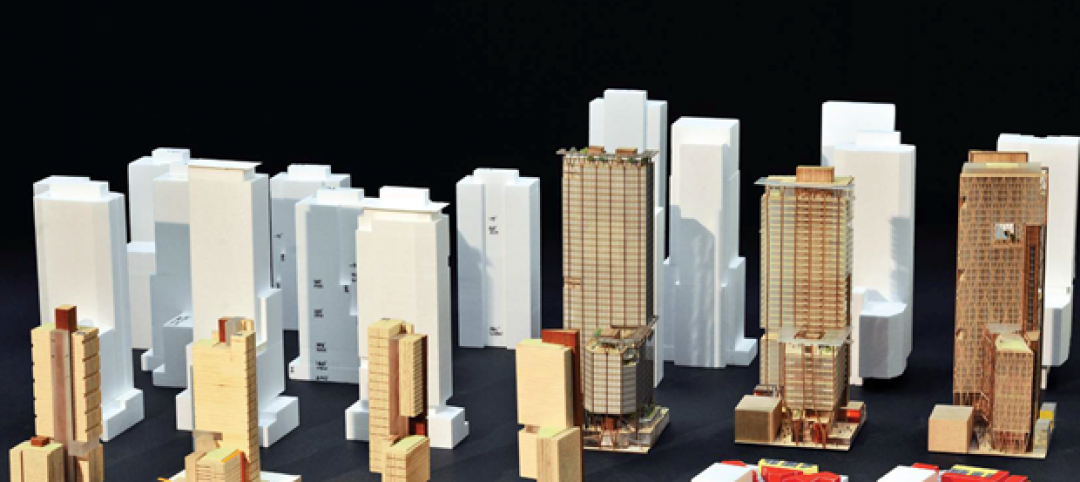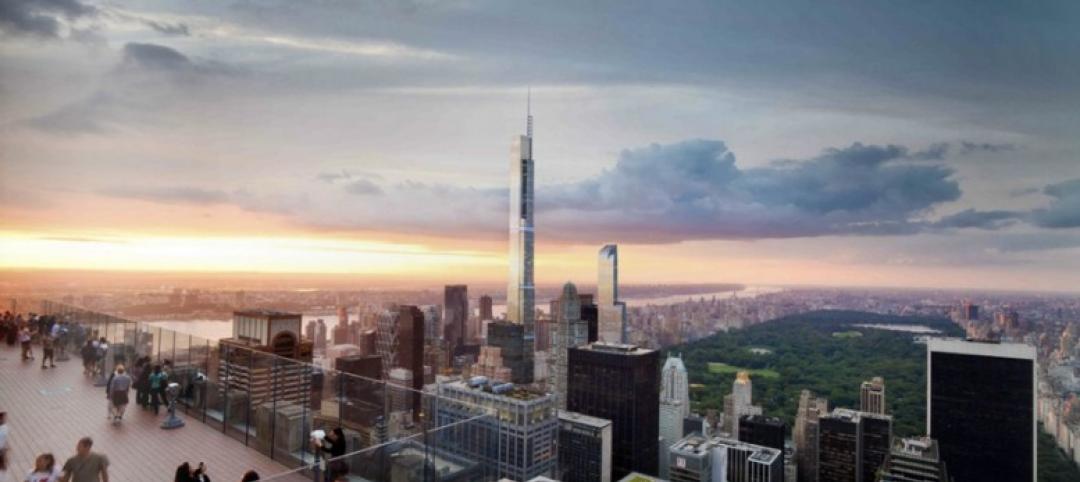The Council on Tall Buildings and Urban Habitat released its annual tall buildings industry predications last month. They include a novel firefighting method that uses jetpacks and simulators to battle blazes high in the sky; a shift from luxury condo towers to high-rise apartments; a rare concrete-clad high-rise in Mexico City that shuns the all-glass trend; and a debate over aviation height regulations.
Here’s a sampling of CTBUH’s top predictions for 2016 (text courtesy CTBUH; see the full list):
Dubai will fight fires with jetpacks. Dubai will potentially revolutionize its high-rise firefighting scheme when 20 jetpacks and two simulators are delivered to the city’s Civil Defense Authority. The jetpacks will be able to operate for up to 30 minutes at ranges between 30 and 50 kilometers and altitudes of up to 900 meters. While we aren’t hoping for any fires, it will be interesting to see if this new technology performs as intended. Many in the industry remain skeptical.
Torre Reforma marks shift away from a generation of tall buildings with all-glass façades. When Mexico City’s Torre Reforma completes in early 2016, it will not only be Mexico’s tallest building, but will signal a major departure from conventional façade design. Its exterior eschews the typical glass curtain wall in favor of a structural concrete exterior on two sides, reducing the cooling load for the building by mitigating overall sun exposure. As tall buildings continue to embrace energy efficient design, the all-glass façade may indeed be losing its luster.
 Torre Reforma, Mexico City. Rendering courtesy torrereforma.com
Torre Reforma, Mexico City. Rendering courtesy torrereforma.com
Developers will diversify residential offerings as global luxury markets saturate. The boom in luxury condominium towers is likely to slow down in 2016 as many of the biggest markets such as London, New York, and Dubai near saturation points. In New York, “Billionaires’ Row” has seen no major new proposals while some under-construction buildings have begun reconfiguring units to create more affordable condos. As the luxury boom slows, expect the rental apartment sector to gain steam with perhaps more emphasis on affordability.
Cities to debate impact of aviation height regulations on tall buildings. Tall buildings have always caused headaches for aviation authorities, who are tasked with determining safe flight paths for takeoffs and landings near major cities. In 2015, a number of major projects in the United States, Australia, and China among other countries hinged on the approval of federal aviation authorities. As several of these disputes come to a head in the coming year, cities will begin to question the impact of these national dictums.
MahaNakhon signifies Bangkok’s global reemergence. At 314 meters, the pixilated MahaNakhon tower will be the tallest building in Bangkok and Thailand when it completes in June, after topping out in April 2015. The 75-story residential and hotel tower seeks to transform its surrounding neighborhood, interplaying with a nearby mixed-use building that establishes an inviting public atmosphere at ground level. As Bangkok’s premier development, it is poised to announce the cities presence on a global stage as investment continues to pour into Thailand’s capital.
Full-scale testing will begin on MULTI elevators after completion of Rottweil Test Tower. With the completion of the 246-meter Rottweil Test Tower—one of the tallest structures in Germany—ThyssenKrupp will begin full-scale testing on its MULTI elevator technology. The transformative vertical transportation technology is set to redefine the way that elevator systems are implemented in skyscrapers. Using magnetic technology, elevators will be placed on tracks that can run vertically, horizontally, and diagonally. A 1:3 scale model of MULTI was unveiled in Spain in November 2015.
Related Stories
High-rise Construction | Jun 5, 2015
Japanese policymakers discuss mandate for toilets in elevators
This quirky-sounding building code is a safety measure for the earthquake-prone nation.
Wood | Jun 2, 2015
Michael Green Architecture designs world's tallest wood building for Paris competition
“Just as Gustave Eiffel shattered our conception of what was possible a century and a half ago, this project can push the envelope of wood innovation with France in the forefront," said architect Michael Green of the project.
High-rise Construction | May 6, 2015
Two new designs submitted for New York City Riverside Center
Both designs reference the cantilevers and other elements featured in architect Christian de Portzamparc’s original masterplan for the complex, which has now been scrapped.
High-rise Construction | May 6, 2015
Parks in the sky? Subterranean bike paths? Meet the livable city, designed in 3D
Today’s great cities must be resilient—and open—to many things, including the influx of humanity, writes Gensler co-CEO Andy Cohen.
Building Owners | May 6, 2015
Hackathons and RFCs: Why one developer killed the RFP
In lieu of an RFP process, Skanska Commercial Development hosted a three-week "hackathon" to find an architect for its 2&U tower in Seattle.
High-rise Construction | Apr 30, 2015
World Trade Center developer looks to Bjarke Ingels for new tower design
Norman Foster’s design for 2 World Trade Center may be ousted, as developers are currently negotiating with Danish firm BIG to redesign the original scheme.
Hotel Facilities | Apr 29, 2015
OMA unveils design for the Netherlands' largest hotel
Once completed, and if approved, the structure will add three stacked cubes to the Amsterdam skyline.
Multifamily Housing | Apr 28, 2015
Mace and Make work on London's 40-story residential tower
The tower is one of six residential high-rises planned near London’s City Road, which is undergoing a mini construction boom.
High-rise Construction | Apr 23, 2015
Size matters in NYC, where several projects vie for the city’s tallest building honor
The latest renderings of 217 West 57th Street show a tower that would rise higher than the World Trade Center’s pinnacle, when elevations are included.
High-rise Construction | Apr 22, 2015
Architects propose sustainable ‘vertical city’ in the Sahara
Designers aim to make the 1,476-foot tower sustainable, relying on rainwater collection, solar power, and geothermal energy.

















